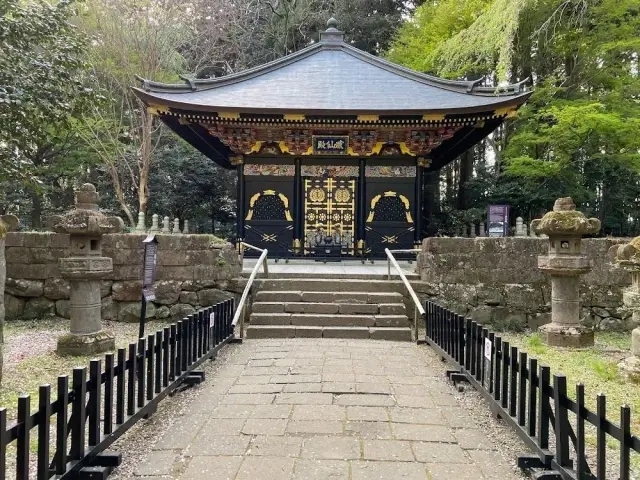https://www.dekitabi.com/itinerary/sendai-city-history-tour
Sendai, known as the “City of Trees,” offers a unique blend of history, culture, and natural beauty. Visiting the Sendai Castle Ruins, Aobayama Park, Sendai City Museum, and Zuihoden allows travelers to immerse themselves in the rich heritage of this vibrant city.
These sites not only highlight the legacy of Date Masamune but also showcase the enduring spirit of Sendai. From the panoramic views at the castle ruins to the tranquil beauty of Aobayama Park, each location offers a distinct experience that enhances your understanding of Sendai’s past.
Whether you’re a history enthusiast, a nature lover, or simply looking to explore a culturally rich destination, Sendai provides a wealth of attractions that captivate and inspire. Discover the historic charms of Sendai and experience the timeless allure of this remarkable city.
Sendai Castle Ruins: A Glimpse into the Past

https://www.dekitabi.com/attraction/sendai-castle
Perched atop Mount Aoba, the Sendai Castle Ruins offer a panoramic view of Sendai City. Built in 1602 by Date Masamune, the founder of the Sendai Domain, the castle once stood as a symbol of power and prestige. Today, it remains a poignant historical site that draws visitors interested in Japanese feudal history and architecture.
While the original structures no longer exist, remnants like the stone walls and guard towers provide insight into the castle’s former grandeur. A visit to the Sendai Castle Ruins is not complete without stopping by the statue of Date Masamune, which overlooks the city. This iconic figure, clad in traditional armor and helmet, epitomizes the samurai spirit and legacy of Sendai’s most famous daimyo.
The site also features the Sendai City Museum’s annex, which houses exhibits related to the castle’s history and the life of Date Masamune. Exploring these ruins allows you to step back in time and imagine the bustling activity that once took place within these fortified walls.
Aobayama Park: Nature Meets History

https://www.dekitabi.com/attraction/aobayama-park
Adjacent to the Sendai Castle Ruins is Aobayama Park, a tranquil green space that offers both historical significance and natural beauty. The park, named after the mountain on which it sits, is a popular spot for locals and tourists alike, providing a serene escape from the city’s hustle and bustle.
Aobayama Park is renowned for its cherry blossoms, which attract numerous visitors during the hanami (flower viewing) season. The park’s lush greenery, combined with the remnants of the castle, creates a picturesque setting that is perfect for leisurely strolls and photography.
In addition to its natural allure, Aobayama Park is home to several monuments and statues that commemorate Sendai’s rich history. One notable feature is the statue of General Masamune Date, symbolizing the area’s deep-rooted samurai heritage. As you wander through the park, you’ll encounter various historical markers that provide context to the events that shaped this region.
Sendai City Museum: A Cultural Treasure Trove

https://www.dekitabi.com/attraction/sendai-city-museum
Located near the Sendai Castle Ruins and Aobayama Park, the Sendai City Museum is a must-visit for history buffs and culture enthusiasts. The museum offers a comprehensive overview of Sendai’s history, from its founding by Date Masamune to its development into a modern city.
The museum’s extensive collection includes artifacts, artworks, and documents that showcase the region’s cultural heritage. Highlights include samurai armor and weapons, traditional clothing, and historical maps. The museum also features exhibits on the life and achievements of Date Masamune, providing deeper insights into his influence on the region.
One of the museum’s standout exhibits is the “Masamune Collection,” which features personal items and treasures belonging to the legendary daimyo. This collection offers a unique glimpse into the life of one of Japan’s most iconic historical figures.
Visitors to the Sendai City Museum can also enjoy interactive displays and multimedia presentations that make learning about Sendai’s history engaging and accessible. Whether you’re a history aficionado or a casual visitor, the museum offers a rich and educational experience that enhances your understanding of Sendai’s past.
Zuihoden: The Mausoleum of Date Masamune

https://www.dekitabi.com/attraction/zuihoden-sendai
Nestled in a forested area near the Sendai Castle Ruins, Zuihoden is the ornate mausoleum of Date Masamune. Built in 1637, the mausoleum reflects the architectural style of the Momoyama period, with its intricate woodwork, vivid colors, and elaborate decorations.
Zuihoden is more than just a burial site; it is a testament to the artistry and craftsmanship of the Edo period. The mausoleum complex includes the graves of Masamune’s successors, making it a significant site for those interested in the Date clan’s history.
Visitors to Zuihoden can explore the main hall, which houses the tomb of Date Masamune, as well as the smaller mausoleums of his descendants. The complex is surrounded by beautiful gardens and towering cedar trees, creating a serene and contemplative atmosphere.
The site’s museum offers additional context, showcasing artifacts and relics related to the Date family. This includes ceremonial objects, personal items, and historical documents that provide a deeper understanding of the clan’s legacy.


Leave a Reply